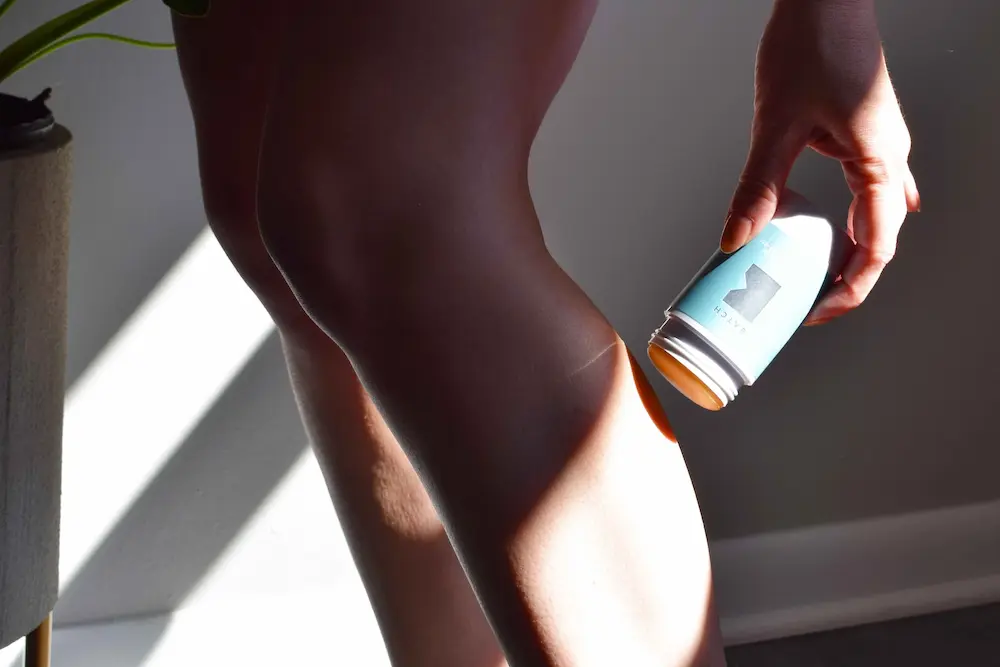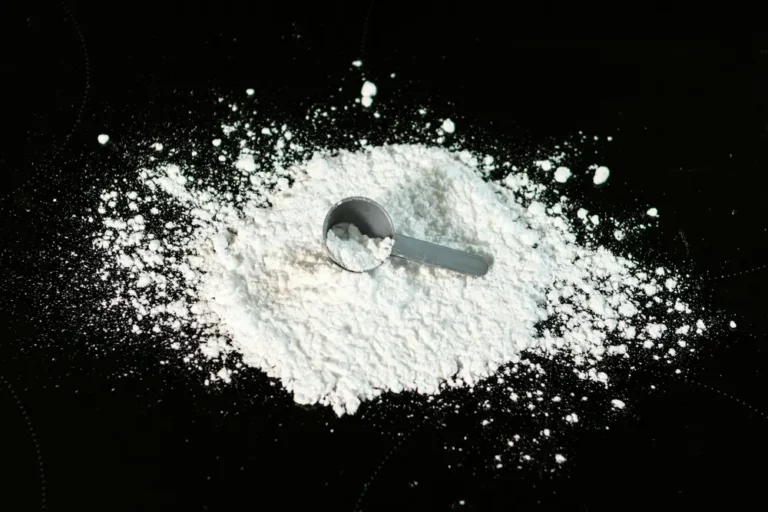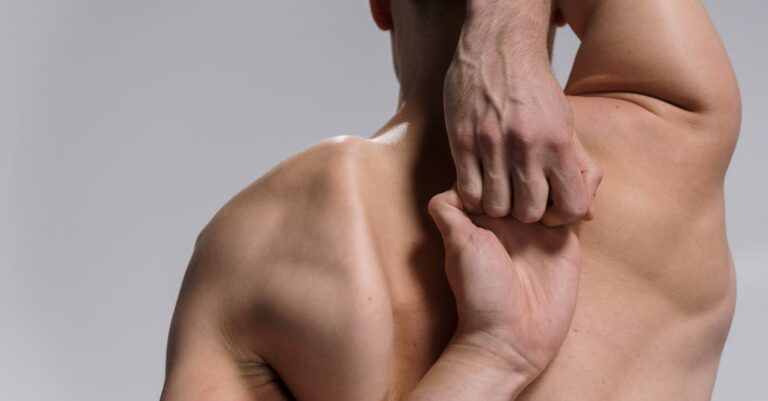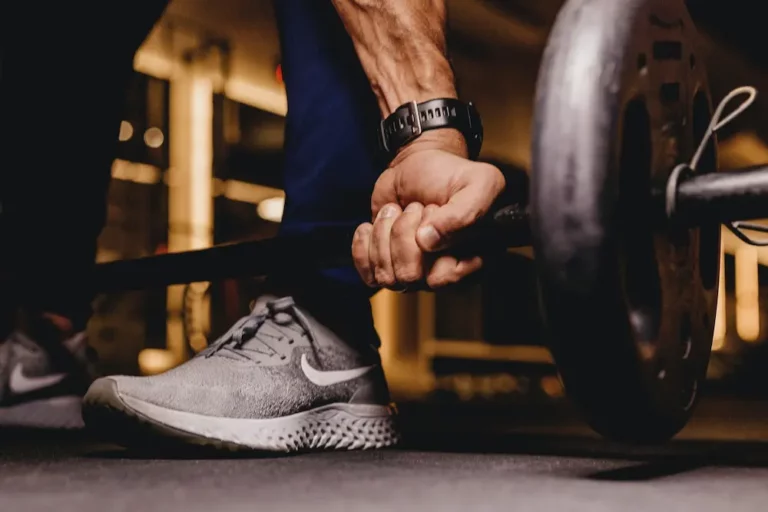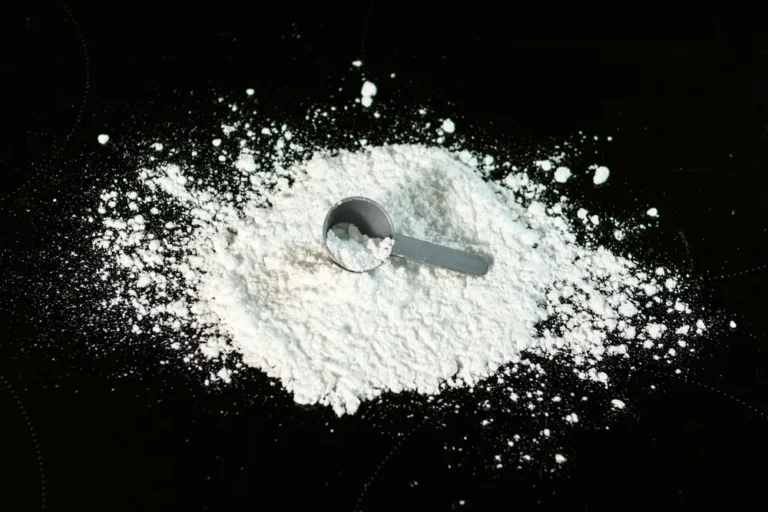How to Massage Tight Calf Muscles: Tips and Techniques
Do you suffer from tight calf muscles? Are you looking for ways to relieve the tension and pain in your calves? Massaging your calf muscles can be an effective way to loosen them up and reduce discomfort. In this article, we will explore different techniques for massaging tight calf muscles that you can do on your own.
One of the best ways to massage your calf muscles is by using your own hands. This technique involves applying pressure to specific points on your calves using your fingers and palms. Another effective way to massage your calf muscles is by using a foam roller or lacrosse ball. These tools can help target deep knots and trigger points in your calves, providing relief from tightness and soreness.
In addition to traditional massage techniques, there are also other methods you can try to alleviate tight calf muscles. These include vibration therapy, floss bands, IASTM tools, and even a barbell. Each of these techniques offers unique benefits that can help you get your calf tension under control and eliminate pain. So, let’s dive into the different ways you can massage your tight calf muscles and find the best method for you.
Understanding Calf Muscles
Your calf muscles are an essential part of your lower leg and play a vital role in your daily activities, such as walking, running, and jumping. The calf is made up of two muscles: the gastrocnemius and the soleus. The gastrocnemius is the larger of the two muscles and is responsible for the bulge in the back of your calf. The soleus is located underneath the gastrocnemius and is responsible for pushing your foot off the ground when you walk or run.
The gastrocnemius muscle originates from the back of your knee and inserts into your Achilles tendon, which attaches to your heel bone. The soleus muscle originates from the back of your tibia and fibula bones and also inserts into your Achilles tendon. These muscles work together to help you move your ankle joint, which is essential for walking, running, and jumping.
When your calf muscles are tight, it can cause discomfort and pain in your lower leg. Tight calf muscles can result from overuse, lack of stretching, or wearing shoes with poor arch support. Tight calf muscles can also cause other problems, such as plantar fasciitis, Achilles tendonitis, and shin splints.
It is essential to understand your calf muscles to know how to treat and prevent tightness. Regular stretching, proper footwear, and massage can help keep your calf muscles loose and healthy. In the next section, we will discuss how to massage your tight calf muscles to relieve discomfort and pain.
Identifying Tight Calf Muscles
If you experience discomfort or pain in your calf muscles, you may have tight calf muscles. Tight calf muscles can be caused by a variety of factors, including overuse, muscle knots, muscle tightness, muscle cramps, and muscle pain. Here are a few signs that your calf muscles may be tight:
- You experience calf pain during or after exercise or physical activity.
- You feel a knot or tightness in your calf muscles.
- You have difficulty walking or standing for extended periods of time.
- You experience muscle cramps or spasms in your calf muscles.
If you are experiencing any of these symptoms, it is important to take steps to alleviate the tightness in your calf muscles. In the next section, we will discuss some techniques you can use to massage your calf muscles and relieve the tightness.
Causes of Tight Calf Muscles
If you’re experiencing tight calf muscles, it could be due to a variety of reasons. Some of the most common causes of tight calf muscles include:
- Overuse: Overusing the calf muscles can lead to tightness. If you frequently exercise or stand for long periods of time, you may be at a higher risk of overusing your calf muscles.
- Dehydration: Dehydration can cause muscle cramps and tightness, including in the calves. Make sure you’re drinking enough water throughout the day to stay hydrated.
- Strain: Straining the calf muscles can cause tightness and discomfort. This can happen from sudden movements or overstretching.
- Muscle tear: A muscle tear can cause tightness and pain in the calf muscles. This can happen from overuse or sudden movements.
- Calf raises: Doing too many calf raises or other exercises that focus on the calf muscles can cause tightness and strain.
- Plantar fasciitis: Plantar fasciitis is a condition that causes pain and tightness in the heel and bottom of the foot. This can lead to tightness in the calf muscles as well.
- Blood clot: A blood clot in the leg, also known as deep vein thrombosis (DVT), can cause tightness and pain in the calf muscles.
- Varicose veins: Varicose veins can cause swelling and tightness in the legs, including the calves.
- Peripheral neuropathy: Peripheral neuropathy is a condition that causes nerve damage in the legs and feet. This can lead to tightness and discomfort in the calf muscles.
- Peripheral vascular disease: Peripheral vascular disease is a condition that affects the blood vessels in the legs. This can cause tightness and discomfort in the calf muscles.
If you’re experiencing tight calf muscles, it’s important to identify the cause so you can find the appropriate treatment. Talk to your doctor if you’re unsure about why your calf muscles are tight or if you’re experiencing other symptoms.
Preparation for Massage
Before you start massaging your tight calf muscles, it’s important to properly prepare the area to ensure a comfortable and effective massage. Here are some tips to help you prepare:
Warm Up
Before you start massaging, it’s important to warm up your calf muscles to help increase blood flow and loosen them up. You can do this by performing some light exercises like walking or jogging in place, or doing some calf stretches. This will help make the massage more effective and reduce the risk of injury.
Lotion or Oil
Using a lotion or oil can help make the massage more comfortable and effective. It can also help reduce friction between your hands and your skin, which can help prevent irritation and discomfort. Choose a lotion or oil that is specifically formulated for massage, and make sure to apply it evenly over your calf muscles before you start massaging.
Comfortable Clothing
Wear comfortable clothing that allows you easy access to your calf muscles. Loose-fitting shorts or pants are a good option, as they will allow you to move freely and reach all areas of your calf muscles without restriction. Avoid wearing tight clothing that may constrict your calf muscles or make it difficult to move around.
Quiet and Relaxing Environment
Find a quiet and relaxing environment to perform your massage. This will help you relax and focus on the massage, which can help make it more effective. You can play some soothing music or use aromatherapy to create a calming atmosphere.
By properly preparing the area before you start massaging your tight calf muscles, you can help ensure a comfortable and effective massage that will help reduce tension and improve circulation.
Basic Techniques for Massaging Tight Calf Muscles
If you have tight calf muscles, you can use basic massage techniques to help relieve tension and pain. Here are some simple techniques you can try at home:
1. Use Firm Pressure
Using firm pressure is key when massaging your calf muscles. You can use your fingers or the palm of your hand to apply pressure to the muscles. Start at the top of the calf and work your way down towards the ankle. Apply pressure in a circular motion, kneading the muscles as you go.
2. Focus on the Areas of Tension
When massaging your calf muscles, focus on the areas that feel tight or tense. Apply extra pressure to these areas to help release the tension. You may also want to spend more time massaging these areas until the tension subsides.
3. Use Your Fingers to Knead the Muscles
Using your fingers to knead the muscles can help to release tension and improve circulation. Start at the top of the calf and work your way down towards the ankle. Use your fingers to knead the muscles, applying pressure as needed.
4. Incorporate Hip and Thigh Massage
Incorporating hip and thigh massage can help to relieve tension in the calf muscles. Start by massaging the hip and thigh muscles, working your way down towards the calf. Use firm pressure and circular motions to knead the muscles as you go.
5. Use a Foam Roller or Massage Ball
Using a foam roller or massage ball can help to relieve tension in the calf muscles. Place the foam roller or massage ball under your calf and roll it back and forth, applying pressure as needed. You can also use the foam roller or massage ball to target specific areas of tension in the calf muscles.
By using these basic techniques, you can help relieve tension and pain in your tight calf muscles. Remember to listen to your body and adjust the pressure and technique as needed.
Using Massage Tools
When it comes to massaging tight calf muscles, using massage tools can be an effective way to target specific areas and provide deeper pressure. Here are a few options to consider:
Lacrosse Ball
A lacrosse ball is a small, firm ball that can be used to apply pressure to specific trigger points in the calf muscles. To use a lacrosse ball, simply place it under your calf while sitting or standing, and roll it back and forth along the muscle. Use your body weight to adjust the pressure as needed, and spend extra time on any particularly tight or sore areas.
Foam Roller
A foam roller is a larger, softer tool that can be used to massage larger areas of the calf muscles. To use a foam roller, simply place it under your calf while sitting or lying down, and roll it back and forth along the muscle. Use your body weight to adjust the pressure as needed, and focus on any areas that feel particularly tight or sore.
Trigger Points
Trigger points are specific areas of tension within the muscle that can be targeted with deep pressure. To find trigger points in your calf muscles, use your fingers to press into the muscle and feel for any areas that feel particularly tender or sore. Once you’ve identified a trigger point, use a massage tool like a lacrosse ball or foam roller to apply deep pressure to the area.
Massage Devices
Massage devices like massage guns or percussion massagers can be a convenient way to massage tight calf muscles without using your hands. These devices use rapid, repetitive movements to provide deep pressure to the muscles, helping to release tension and improve circulation. When using a massage device, start with a low intensity and gradually increase the speed and pressure as needed.
Overall, using massage tools can be a helpful way to massage tight calf muscles and release tension. Experiment with different tools and techniques to find what works best for you, and always listen to your body to avoid overdoing it or causing injury.
Stretching Exercises for Tight Calf Muscles
If you have tight calf muscles, stretching exercises can help you loosen them up. Stretching can improve your range of motion and reduce the risk of injury. Here are some calf stretches you can try:
- Towel stretch: Sit on the floor with your legs straight out in front of you. Loop a towel around the ball of your foot and gently pull back on the towel. You should feel a stretch in your calf. Hold the stretch for 15-30 seconds and repeat on the other leg.
- Runner’s stretch: Stand facing a wall with your hands on the wall at shoulder height. Step back with one foot and press your heel into the ground. You should feel a stretch in your calf. Hold the stretch for 15-30 seconds and repeat on the other leg.
- Downward dog: Start on your hands and knees with your hands shoulder-width apart. Lift your hips up and back, straightening your arms and legs into an upside-down V shape. Press your heels into the ground to feel a stretch in your calves. Hold for 15-30 seconds.
- Seated calf stretch: Sit on the floor with your legs straight out in front of you. Cross one leg over the other and gently press down on the knee of the crossed leg. You should feel a stretch in your calf. Hold for 15-30 seconds and repeat on the other leg.
Remember to breathe deeply and hold each stretch for 15-30 seconds. Don’t push yourself too hard and stop if you feel any pain. Regular stretching can help prevent tight calf muscles and improve your overall flexibility.
Professional Help for Tight Calf Muscles
If you have been experiencing tight calf muscles for a while, and the self-massage techniques and stretches are not providing relief, it might be time to seek professional help. There are several options available to you, including massage therapy, physiotherapy, and physical therapy.
Massage Therapy: A massage therapist can help you relieve tension in your calf muscles. They will use various techniques such as deep tissue massage, trigger point therapy, and myofascial release to help loosen up the tight muscles. A massage therapist can also provide you with tips on how to stretch and maintain your calf muscles to prevent future tightness.
Physiotherapy: A physiotherapist can help you identify the root cause of your tight calf muscles. They will assess your gait, posture, and muscle imbalances to determine the best course of treatment. They may also use techniques such as ultrasound, electrical stimulation, and dry needling to help relieve tension in your calf muscles.
Physical Therapy: Physical therapy can help you strengthen your calf muscles and improve your overall mobility. A physical therapist will create a customized exercise program for you that focuses on stretching, strengthening, and balance. They may also use modalities such as heat, ice, and ultrasound to help relieve pain and inflammation.
When choosing a professional to help with your tight calf muscles, it’s essential to do your research. Look for qualified professionals with experience in treating calf muscle issues. Ask for referrals from friends or family members, and read reviews online. Remember, it’s essential to communicate with your healthcare provider about your symptoms and any concerns you may have.
In summary, seeking professional help can be a great option if you are experiencing tight calf muscles. Whether it’s massage therapy, physiotherapy, or physical therapy, there are several options available to you. Be sure to do your research and choose a qualified professional to help you with your calf muscle issues.
Post-Massage Care
After a deep tissue massage or trigger point massage, it is important to take care of your calf muscles. Here are some tips to help you recover:
Rest
Rest is crucial after a massage. Your muscles need time to heal and recover from the pressure applied during the massage. Avoid strenuous activity for at least 24 hours after the massage.
RICE Method
If you experience any swelling or pain after the massage, you can use the RICE method to help reduce inflammation and promote healing. RICE stands for Rest, Ice, Compression, and Elevation.
- Rest: As mentioned above, rest is important after a massage. Avoid putting any unnecessary pressure on your calf muscles.
- Ice: Apply an ice pack to the affected area for 20 minutes at a time, several times a day. This will help reduce swelling and pain.
- Compression: Use a compression bandage or wrap to help reduce swelling and provide support to your calf muscles.
- Elevation: Elevate your legs above your heart to help reduce swelling and promote healing.
Ice Pack
If you experience any discomfort or soreness after the massage, you can use an ice pack to help reduce inflammation and promote healing. Apply the ice pack to the affected area for 20 minutes at a time, several times a day.
Relaxing
After a massage, it is important to take some time to relax and allow your muscles to heal. Take a warm bath, read a book, or listen to some calming music. This will help reduce stress and promote healing.
Remember to always listen to your body and take care of yourself after a massage. If you experience any severe pain or discomfort, seek medical attention immediately.
Preventing Tight Calf Muscles
If you want to prevent tight calf muscles, there are a few things you can do. Here are some tips that can help:
Wear Proper Footwear
Wearing proper footwear is crucial to preventing tight calf muscles. Shoes that are too tight or too loose can cause muscle fatigue and soreness. Make sure your shoes fit properly and provide enough support for your feet.
Stretch Regularly
Stretching regularly can help prevent tight calf muscles. You can do calf stretches before and after exercise or anytime you feel tightness in your calves. Some effective calf stretches include standing calf stretch, seated calf stretch, and wall calf stretch.
Stay Hydrated
Staying hydrated is important for preventing tight calf muscles. Dehydration can cause muscle cramps and fatigue, which can lead to tightness in your calves. Make sure you drink plenty of water throughout the day.
Improve Circulation
Improving circulation can also help prevent tight calf muscles. You can do this by doing exercises that promote blood flow, such as walking or cycling. You can also try elevating your legs or using compression socks to improve circulation.
By following these tips, you can help prevent tight calf muscles and keep your legs feeling strong and healthy.
Frequently Asked Questions
Why does it hurt to massage my calves?
If you feel discomfort or pain when massaging your calves, it could be a sign of tightness or inflammation in the muscles. It’s important to be gentle and not apply too much pressure, especially if you’re new to massaging your calves. Start with light pressure and gradually increase as your muscles loosen up. If the pain persists or becomes severe, it’s best to consult with a healthcare professional.
How do you release tight calf muscles?
There are several ways to release tight calf muscles. Stretching, massaging, and foam rolling are all effective methods. You can also use a lacrosse ball or massage gun to target specific areas. It’s important to listen to your body and not push yourself too hard, especially if you’re experiencing pain or discomfort.
What is the best massage for tight calves?
The best massage for tight calves depends on your personal preference and the severity of your muscle tightness. Some people prefer deep tissue massage, while others find Swedish massage or trigger point therapy to be effective. Experiment with different types of massage and find what works best for you.
How do you give yourself a calf massage?
To give yourself a calf massage, start by applying massage oil or lotion to the area. Use your fingers, hands, or a massage tool to apply pressure and knead the muscles. Start with light pressure and gradually increase as your muscles loosen up. Focus on any areas of tightness or discomfort, and be sure to take breaks if you start to feel fatigued.
Where do you massage your calf muscles?
When massaging your calf muscles, focus on the gastrocnemius and soleus muscles. These are the two main muscles in the calf and are often the source of tightness and discomfort. Use your fingers, hands, or a massage tool to apply pressure to these areas, and be sure to work on both legs.
What causes tight calf muscles?
Tight calf muscles can be caused by a variety of factors, including overuse, injury, poor posture, and dehydration. It’s important to stay hydrated and stretch regularly to prevent muscle tightness. If you’re experiencing chronic tightness or pain in your calves, it’s best to consult with a healthcare professional to rule out any underlying conditions.

